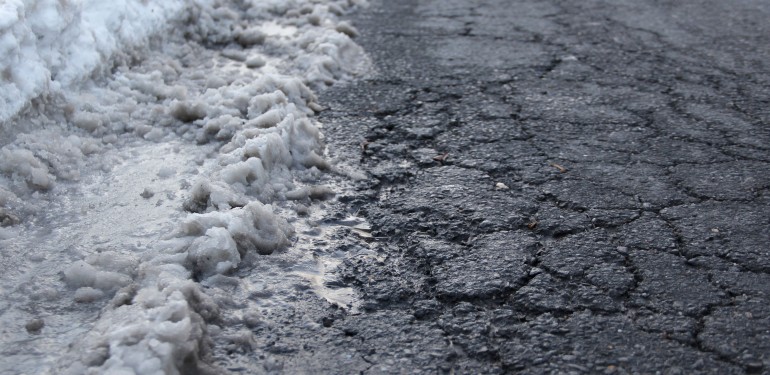This story was originally published in the Feb. 23 print issue.
Additional reporting by Reem Nadeem.
The Virginia Department of Transportation is planning to widen Interstate 66 from one to two lanes between the Beltway and the town of Haymarket.
The expansion of the 25 mile stretch of highway is expected to cost $2-3 billion. VDOT plans to add a High-Occupancy Toll lane on both sides of the interstate and convert all carpool lanes to High-Occupancy Toll lanes. Construction is expected to start 2017.
According to VDOT, the goals of construction include moving “traffic and people more quickly and reliably” and reducing “congestion by increasing capacity.”
“66 is a major interstate. It’s a major commuter route so…we’re doing this to improve it, to alleviate the congestion, provide more travel choices for people, and also provide more reliable choices for drivers, for buses. We’re trying to do that through the express lanes,” Michelle Holland of Transform 66 said.
While Transform 66 seeks to alleviate traffic by creating more options for drivers, the project will also provide alternatives to driving in general.
“We’re also looking at other improvements beyond just more lanes. We’re looking at adding high frequency bus service, expanding and building new park and ride lots to encourage car pooling, so we’re looking at a variety of other solutions,” Holland said.
Because the plan is still in its early phases, how traffic will be managed during construction has yet to be decided.
“On any of our major projects, we always devote resources to managing traffic during construction. For instance, we don’t have major lane closures during rush hours, we try to do a lot of the work at night when traffic is lighter,” Holland said.
Four express lanes are also part of construction, two in each direction. According to Holland, these lanes will be free at all times for automobiles with three or more passengers. This encourages carpooling, which also helps alleviate traffic, Holland said.
“What express lanes do is they offer a more reliable trip, a more predictable commute because you have to keep traffic moving at all times, at least 45 miles per hour on express lanes. And you manage the traffic flows through dynamic tolling, meaning you adjust the price to match demand for the lane,” Holland said.
“I drive on 66 at least 5 days a week going back and forth from campus to Gainesville because of work,” sophomore Mikayla Kyle said. “Normally I’m going against traffic which is not too bad, but when I do hit traffic I’m at a complete stop because I can’t be in the HOV lane by myself. I would personally love the addition of two express lanes, especially if I could use my E-ZPass. The only thing I won’t like is when they’re doing construction for them because that just makes traffic worse, but the end product will be well worth it.”
VDOT is contemplating two designs for the new stretch of highway. One option provides space for public transportation, like the Metro, and the second option does not.
The Virginia Chapter of the Sierra Club hopes VDOT will maintain an interest in increasing transportation options throughout the project. Ishmael Buckner, Northern Virginia conservation program coordinator for the Virginia Chapter of the Sierra Club, said the group is focused on promoting public transportation and walkable communities, as well as making travel more enjoyable.
Though they advocate for better conditions, Buckner said the Sierra Club neither actively supports nor opposes the project. He said the chapter only wants to have its opinions heard.
“If the project is going to go forward we want these things to be considered and not be left out of the decision making process,” Buckner said.
In a public flyer, the chapter called this project a “once-in-a-generation opportunity to reconnect Northern Virginia communities through improved bicycling and walking facilities.” The group supports the construction of a pedestrian and bicycle trail on the interstate, with a barrier to separate the trail from highway traffic. They said the trail would increase “non-motorized access” to Metro stations, shopping centers and parks.
While VDOT has listened to the chapter’s suggestions on some previous projects, Buckner feels the department is mostly focused on building roads, which is contrary to the chapter’s goals of promoting walkable communities and increasing multi-modal transportation.
Buckner said a large group of people in the area would benefit from not having to pay the cost of regular highway travel. He said more public and multi-modal transportation would make traveling without a car easier for a lot of people.
“[VDOT is] realizing people are in need of public transportation options,” Buckner said.
He believes VDOT is listening to public concern while they finalize the plans for this construction.
“From the [public information] meetings and reactions I know they heard what people had to say about it,” Buckner said. “How that will translate to changes in the plan is still yet to be seen.”
Photo credit: Amy Rose

